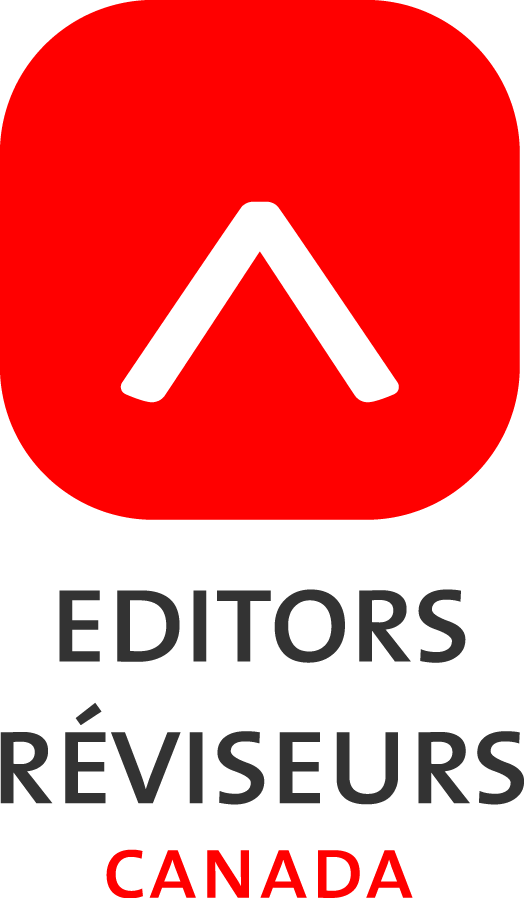Systematic Editing for the Uncomfortable / Nervous / Reluctant / Insecure Editor
Editing a piece of work isn’t my favourite occupation. If it’s my own, then word blindness and over-familiarity settles in. If it’s for someone else, then I panic about changing their voice.
Most of the time I sort-of know when something’s not right, but not always how to fix it. And this hasn’t changed much; editing courses usually leave me confused and demoralized so I’ve avoided them. At the risk of annoying all the writing instructors I’ve taken classes from, I admit I’m still reading aloud and switching to Comic Sans as my basic only method.
Unlike a carefully crafted narrative, my editing approach has no beginning, middle or end as I dot between lines, paragraphs and pages
However, my approach is slowly changing.
I recently took an all-day Eight-Step Editing workshop with my local chapter of Editors Canada. As well as nudging me into a systematic approach for editing both my own and workplace documents, I was surprised to also pick up some useful writing tips.
Editors Canada has run the Eight-Step Editing workshops since 1985 alongside its full certification programs. Describing Eight-Step Editing as “breaking down the editorial process into a series of tasks,” the organization promotes the workshops to three audiences:
- new editors who need a systematic process,
- freelance writers looking for a way to improve manuscripts,
- jaded business writers seeking inspiration.
Jim Taylor, an experienced writer and editor with more than 50 years’ experience in the industry, developed the eight-step approach. He recently handed workshop management over to three other editors, including Moira White who led the workshop I took part in. Updated course materials and a new website support upcoming webinars and in-person workshops.
What are the eight steps?
The stepwise approach uses eight different tasks that lead the editor through a manuscript. Each step concentrates on an issue that, when addressed, improves overall readability. Instead of trying to do everything in one pass of the manuscript, the stepwise approach breaks it down into simpler stages.
- Step One: shorten sentences
- Step Two: take out the trash
- Step Three: eliminate the negatives
- Step Four: deflate long words and phrases
- Step Five: eliminate the equations
- Step Six: activate the passives
- Step Seven: lead with strength
- Step Eight: parade your paragraphs
If you’re already editing with confidence, most of the steps are self-explanatory or obvious. Step one—shorten sentences—is a key feature in most readability algorithms; activate the passives (step six) is a constant battle for most science writers and those editing work by academics.
However, if the words dance and it’s never occurred to you to break editing into easy and logical steps, Eight-Step Editing is a revelation brings confidence and saves time.
Editing helps the writing process
It also helps the writing process; this surprised me as I’d never considered editing as part of my initial writing process. Learning how to apply each step helped me understand how the issues broke the readability flow and sucked life out of a passage.
Furthermore, steps seven and eight are all about content and layout. While step seven concentrates on the strength of your opening, step eight explains how topic sentences continue the flow. Moira suggested that you should be able to understand the whole story from reading only only the lead sentences of each paragraph. It’s a great tip for outlining a new piece.
During the workshop, Moira expertly guided us through each of the eight steps. Using examples in the workbook to illustrate them, she then followed up the theory with practice. In-class exercises got us working on each step, while discussing the edits helped further clarify what each step accomplished.
At the end of the day, Moira showed us how quickly we could edit a manuscript using the step-by-step approach to triage a portion of it. Limiting us to one minute per step, we were all able to edit our way systematically through a page of text. It’s a useful tool for freelancers preparing an estimate for a new client or project.
Eight-Step Editing is slowly, gradually making its way into my workflow. Concentrating on one step at a time until comfortable before adding in the next helps build the habit. I’m still nowhere near full implementation… but it’s a start. Little steps, all eight of them.
Want to learn more? Editors Canada and Eight-Step Editing are running online workshops on June 11 and 12.
Amanda Maxwell describes herself as a freelance science writer and digital space explorer. Her comfort zone is clinical research; her background is veterinary; she goes fangirl over protein chemistry. With a varied communications career and education, Amanda writes about critical thinking, meat glue, mass spectrometry, blood products and cognitive automation among other subjects for a diverse range of clients. Somehow it all meshes together perfectly! Follow her on Twitter @afmaxwell.





on June 3, 2018 at 8:34 pm
· Permalink
Wow, this is fantastic… great tips, here.